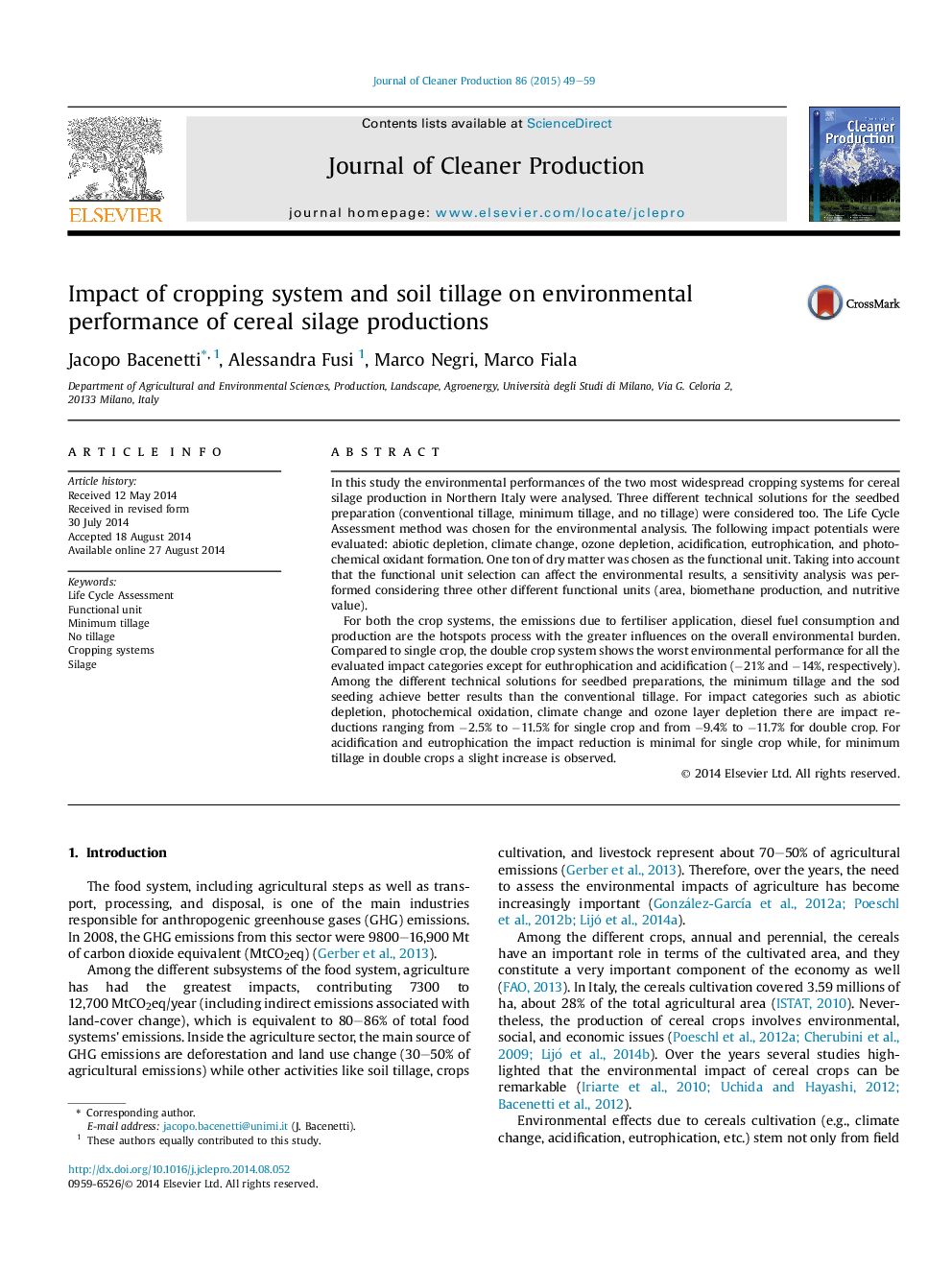| کد مقاله | کد نشریه | سال انتشار | مقاله انگلیسی | نسخه تمام متن |
|---|---|---|---|---|
| 1744702 | 1522160 | 2015 | 11 صفحه PDF | دانلود رایگان |
• Life cycle assessment of two crop systems for cereal silage productions.
• Three different technical solution for seed bed preparations.
• Maize single crop obtains the better environmental performances.
• Key factors are: fertilizer application and diesel fuel consumption.
• Sod seeding reduces environmental impact compared to ploughing.
In this study the environmental performances of the two most widespread cropping systems for cereal silage production in Northern Italy were analysed. Three different technical solutions for the seedbed preparation (conventional tillage, minimum tillage, and no tillage) were considered too. The Life Cycle Assessment method was chosen for the environmental analysis. The following impact potentials were evaluated: abiotic depletion, climate change, ozone depletion, acidification, eutrophication, and photochemical oxidant formation. One ton of dry matter was chosen as the functional unit. Taking into account that the functional unit selection can affect the environmental results, a sensitivity analysis was performed considering three other different functional units (area, biomethane production, and nutritive value).For both the crop systems, the emissions due to fertiliser application, diesel fuel consumption and production are the hotspots process with the greater influences on the overall environmental burden. Compared to single crop, the double crop system shows the worst environmental performance for all the evaluated impact categories except for euthrophication and acidification (−21% and −14%, respectively). Among the different technical solutions for seedbed preparations, the minimum tillage and the sod seeding achieve better results than the conventional tillage. For impact categories such as abiotic depletion, photochemical oxidation, climate change and ozone layer depletion there are impact reductions ranging from −2.5% to −11.5% for single crop and from −9.4% to −11.7% for double crop. For acidification and eutrophication the impact reduction is minimal for single crop while, for minimum tillage in double crops a slight increase is observed.
Journal: Journal of Cleaner Production - Volume 86, 1 January 2015, Pages 49–59
